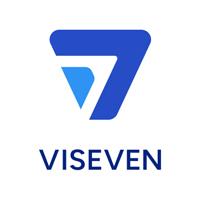The next frontier: How to use AI-powered analytics for life sciences marketing

Using spreadsheets for data analysis is totally okay, especially if we are talking about standardised small-to-medium datasets. Basic calculations often shine a big light on the situation, so that you can make a more informed marketing decision. However, traditional analytical tools will never suffice if you want to dig deeper to understand why certain events happened, what you should do, or what is likely to happen in the future.
Besides, most pharmaceutical brands work with massive volumes of unstructured data, often measured in terabytes. This makes complex pattern recognition practically impossible for human analysts, let alone time-consuming, expensive, and prone to errors.
The good news is AI analytics can handle these tasks in mere seconds. Drawing from my experience as a CEO at an international MarTech company, I would like to share how companies can leverage it in life sciences marketing.
Customer segmentation
Customers’ behaviours are complex and ever-changing, meaning it is ineffective to take basic demographic characteristics, like HCP specialty or years of experience, and call it a day. Marketers must realise that people in these segments may act differently and are affected by various factors daily life. Global crises, pandemics, technology disruptions, or new market players can dramatically change their sentiments, preferences, and behaviours.
When life sciences companies fail to understand their market segments, they risk sending the wrong messages to their audience. This strategy may cause financial losses for the business and result in customers’ frustration and high churn rates.
With AI data analytics, digital marketing teams can slice the HCP or patient market accurately and, therefore, target them more precisely. The technology also lets pharmaceutical companies paint a detailed picture of their customers in real time. Based on my experience, this gives a substantial competitive edge, since they can quickly engage with customers at early stages of their journey.
Forecasting and real-time decision-making
AI-driven analytics tools process vast amounts of data, including audio, video, and images, and spot complex market trends. You no longer need to wait days for your employees to hand in their reports. AI algorithms whip through data, empowering you to make decisions backed up by real-time evidence. This is crucial when metrics shift rapidly, demanding quick responses to keep ahead of the competition.
AI chatbots can also process historical data to picture various what-if scenarios, predict possible outcomes, and give tailored advice. Let’s say users type in a question such as, ‘When can we expect a surge in sales after launching the new digital marketing strategy?’ If the outlook is not optimistic, they can further engage by asking, ‘How can we speed up the boost in sales?’
Sentiment analysis
Many life sciences companies still rely on customer surveys to gauge the perception of their products and brands. While this approach is quite common, it suffers from some serious limitations. Some people may be inclined to give positive feedback, rather than express their true feelings. Moreover, the questions in these surveys might not be designed to elicit honest answers.
Conducting surveys can be a time-consuming endeavour, especially when analysing the opinions of a large customer base. Finally, some marketers might inherently focus on either the positive or the negative survey results, demonstrating selective perceptions of a situation.
AI-based sentiment analysis lets pharmaceutical brands tap into what their target audience says about their products and capture their immediate reactions. With this technology, companies can scan through large volumes of comments, reviews, chatbot responses, and even social media images to get a synthesis of customers’ genuine emotions towards their brand. Additionally, robust sentiment analysis solutions can help them get an objective perspective without cognitive biases.
Data visualisation
Data insights are extremely useful for life sciences marketing, but, at the same time, they are gibberish if you fail to make sense of them.
Marketers often feel overwhelmed by large numbers and tables and it is easy to see why. Transforming a wall of digits into a coherent story is like trying to decipher a code without any programming skills.
AI solutions help pharmaceutical companies create interactive visuals, such as dashboards, graphs, and diagrams, to make raw data easy to understand. These technologies provide the big picture of their marketing efforts and help effortlessly discern important market patterns and trends.
In my practice, the less time needed to grasp a visual, the more effective the communication. With AI-generated visualisations, team members can swiftly exchange messages, back up their arguments, and reach common evidence-based decisions.
Things to consider when using AI analytics
If you decide to use AI analytics in life sciences marketing, there are a couple of key factors to be cautious about:
Data security
Pay attention to the data you are feeding to any third-party tool. If you rely on AI for analysis, other users might also access it when they inquire about similar information.
In life sciences, where regulations are stringent, it is better not to teach AI models your highly sensitive information. To stay on the safe side, opt for solutions with a solid reputation in your industry.
Data quality
A common rule, “trash in, trash out” applies to AI analytics. Even reliable and effective solutions will not live up to your expectations if your data is riddled with errors and has poor formatting.
Before settling down with any analytics tool, ensure your data is clean, accurate, and free from biases. Consider involving your team members to check the integrity and consistency of your data.
Using AI to make most of your data
Pharmaceutical brands rely on AI-driven analytics to efficiently promote their products, boost brand visibility, and build a loyal customer base. This successful life sciences marketing strategy gives a wide range of benefits throughout campaign development and evaluation.
With these solutions, life sciences companies target their audience with surgical precision, predict customer behaviours, make decisions on the fly, and truly grasp how buyers view their campaigns. If you need that helicopter view of your business with real-time guidance, this solution is worth your attention.
About the author
 Nataliya Andreychuk is the CEO and co-founder of Viseven, a global MarTech services provider for life sciences and pharma industries. She is one of the top experts in digital pharma marketing and digital content implementation and has more than 14 years of solid leadership behind her belt. Andreychuk is among the strongest female leaders in the marketing technology world. She has been contributing her vast expertise to developing smart digital solutions and software, which are now serving clients in over 70 global markets, delivering intelligent, personalised content across channels, platforms, and countries.
Nataliya Andreychuk is the CEO and co-founder of Viseven, a global MarTech services provider for life sciences and pharma industries. She is one of the top experts in digital pharma marketing and digital content implementation and has more than 14 years of solid leadership behind her belt. Andreychuk is among the strongest female leaders in the marketing technology world. She has been contributing her vast expertise to developing smart digital solutions and software, which are now serving clients in over 70 global markets, delivering intelligent, personalised content across channels, platforms, and countries.
About Viseven

Visevenis a future-inspired global MarTech Services Provider for Pharma and Life Sciences industries with more than a decade of experience. Viseven's digital transformation centre offers innovative solutions for companies of different sizes and digital maturity levels by merging marketing and digital technology expertise with innovation and strategic capabilities. The company's solutions, products, and services are actively used by the TOP 100 Pharma and Life Sciences companies in more than 50 countries around the globe.
Follow Viseven on social media:LinkedIn,Twitter,YouTube,Facebook
Follow Nataliya Andreychuk on LinkedIn












